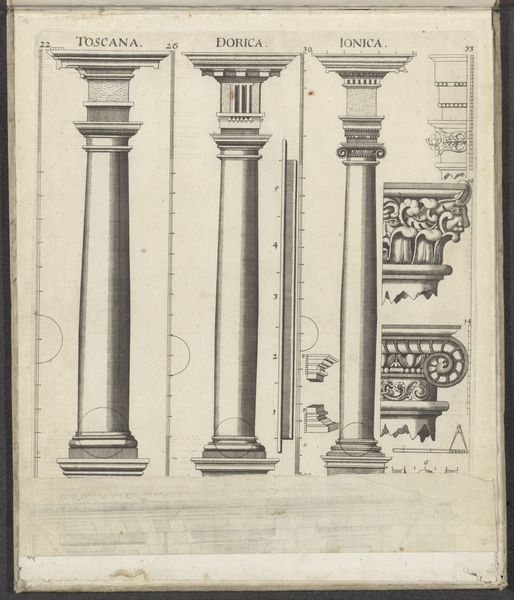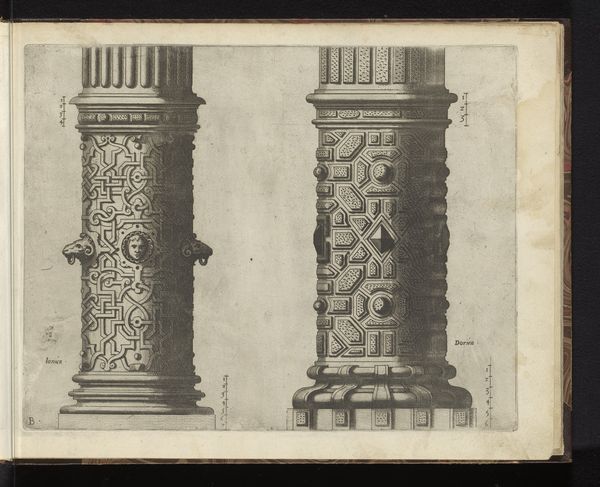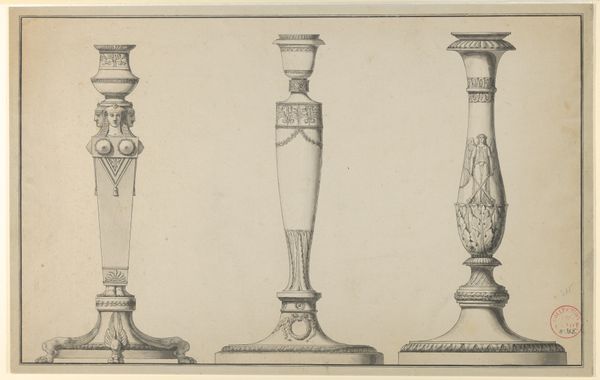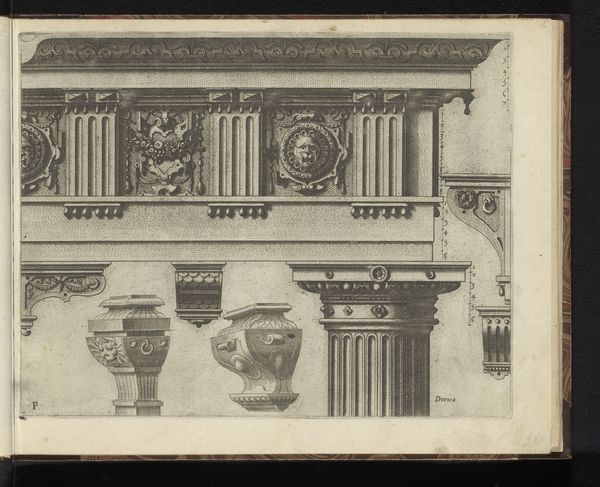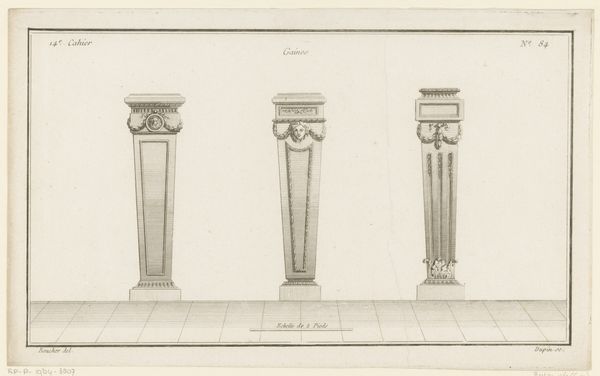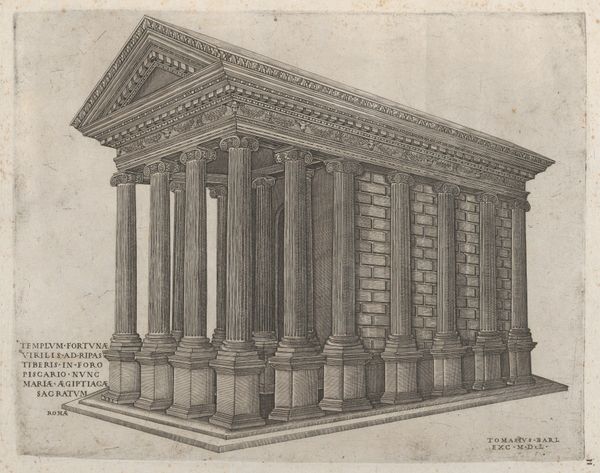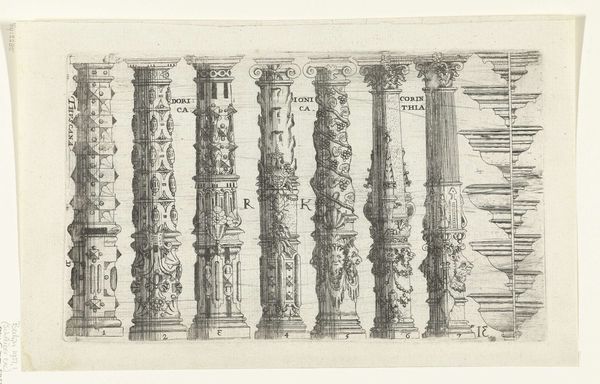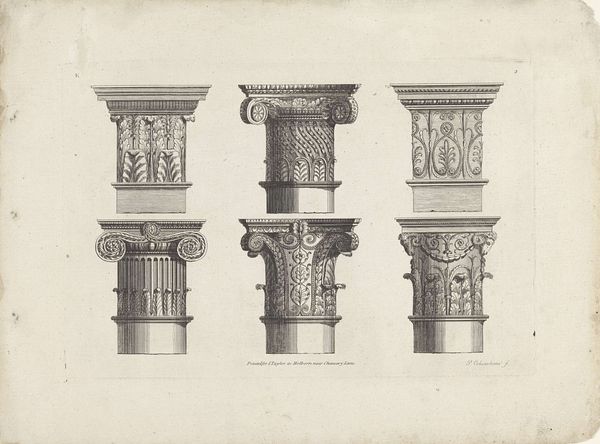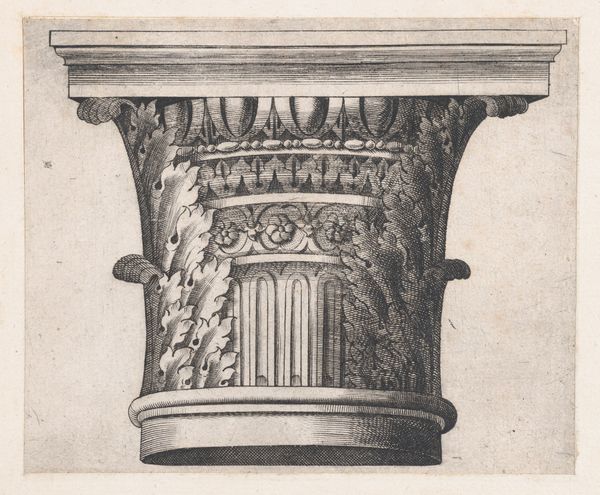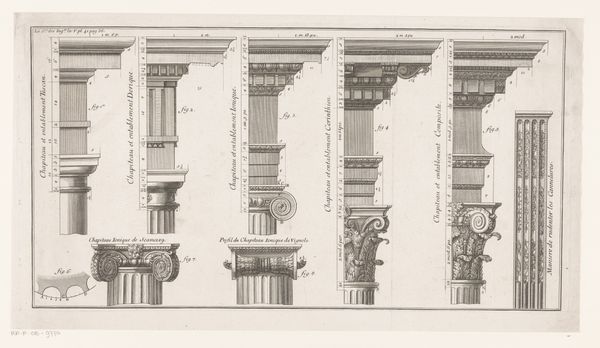
Dimensions: 181 × 264 mm
Copyright: Public Domain
Editor: Here we have Giovanni Battista Montano's "Three Candelabra," likely created between 1550 and 1621. It’s an ink, tempera, and charcoal drawing on paper. I'm struck by the detailed ornamentation and the variations between the three designs; they almost feel like portraits of different architectural styles. What do you make of this piece? Curator: This drawing speaks volumes about the function of art within architectural practices during the late Renaissance and early Baroque periods. It's less about 'art' in the modern sense, and more about documentation and dissemination of design. We see the growing professionalization of the architect – they're not just building, they're also producing drawings as records and models. Editor: So it’s a design document meant to be referenced rather than an artistic statement? Curator: Precisely. And the proliferation of prints, of which this drawing could be a precursor, is critical. These designs, disseminated through prints, could influence architectural aesthetics across Europe. Consider how such imagery contributed to stylistic trends, informing building practices and shaping cultural identity through visual motifs. What do you notice about the candelabras’ decorative elements? Editor: I see a lot of classical motifs, but each candelabra has its unique flourishes… some have spiral columns, others are more linear and geometric. Does that suggest a tension between established tradition and new design ideas? Curator: Exactly. It reflects the architect's negotiation with historical precedent while striving for novelty. The ‘hand’ of the artist, and how their personality is perceived in the work, wasn’t yet as prioritized as its didactic function and its ability to meet certain established conventions. Editor: This conversation really reshapes my understanding of the image! It’s less about personal expression and more about its role in a larger architectural conversation. Curator: Indeed. This drawing serves as a potent reminder of how art functioned within historical, social, and professional networks, actively shaping the built environment we inhabit today.
Comments
No comments
Be the first to comment and join the conversation on the ultimate creative platform.
